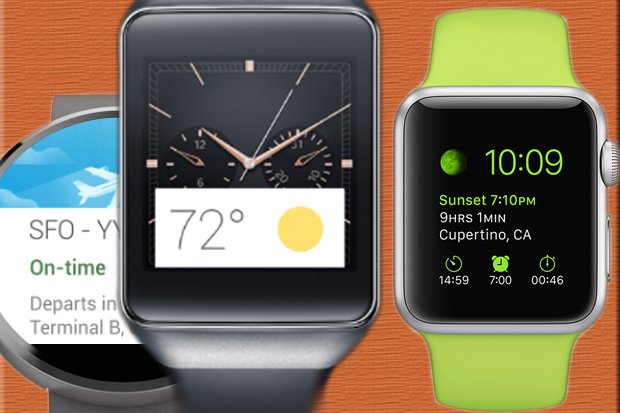SMARTWATCH USER DROPOUT RATE IS STILL 29%, GARTNER SAYS


Almost a third of smartwatch owners — 29%, to be exact — have stopped using them, saying they didn’t find the devices useful, got bored with them or they broke.
Those findings, released Wednesday by research firm Gartner, don’t indicate that smartwatches are on their way out. But what’s troubling is that the 29% rate of “abandonment” hasn’t really changed very much since 2013, said Gartner analyst Angela McIntyre.
“I’m a little surprised that the abandonment rate is still that high, given all the improvements in smartwatches since the early days,” she said.
That dropout rate is a serious problem for smartwatch makers since it is high when compared to the percentage of respondents who have a smartwatch; just 10% of the 9,592 surveyed, have one, McIntyre said. The survey was conducted online from June to August 2016 with residents in the U.S., the U.K. and Australia.
McIntyre called on smartwatch makers like Apple and Samsung to push harder to create smartwatches and other wearables like fitness bands that have functions distinct from those already on a smartphone. She said vendors need to better engage users with incentives and even games.
Computerworld blogger JR Raphael recently detailed why he stopped using a smartwatch after routinely wearing three styles running the Android Wear OS. His biggest reason for wearing a smartwatch was to keep up with information and conduct basic tasks without needing his phone. Then Raphael reached the point “where I prefer to be less connected more of the time.”
At a 10% adoption rate, smartwatches are still in the “early adopter phase,” Gartner said. By comparison, fitness trackers, like those made by Fitbit, have done better and have reached the “early mainstream” stage with 19% adoption. The survey also found that 30% of fitness trackers are abandoned by users after a period of time. (Gartner didn’t say how long the devices were used before being abandoned.)
As other polls have shown, smartwatches are most used by people under age 45. The U.S. leads the three countries polled in smartwatch usage at 12%, while that figure was 9% in the U.K. and 7% in Australia. Usage is up somewhat in the U.S. and U.K. compared to a similar poll done in 2015.
McIntyre said her long-term forecast for smartwatch growth remains upbeat. Gartner’s latest forecast expects nearly 43 million smartwatches to be sold in 2016, increasing to 58.6 million in 2017 and 87.4 million in 2020. Part of her forecast is based on how many traditional watch makers will want to add new smart features to those older watch styles.
“Watch makers will want to include functionality such as wireless connectivity with the smartphone or to add alerts or a connection to a personal assistant,” she said. “That’s a natural evolution of watch capabilities, as with many consumer electronics. We’ll continue to see inclusions of smartwatches in the overall watch category.”
In one future scenario, she said smartwatch makers could design a smartwatch to be an extension of a home-based personal assistant like Amazon Echo. In that case, a command to the Echo could be spoken into the watch when the user is it out of the room where the Echo device is located. “A smartwatch could be used to get information or to control your connected home,” she said.
One of the pioneers in smartwatches, Pebble, announced Wednesday it would no longer make Pebble devices; Fitbit said it acquired Pebble’s assets, including intellectual property and key employees. Fitbit was interested in the PebbleOS, which can be paired with Apple’s iOS and Android.
Some see the Fitbit move as a negative for the future of smartwatches. But McIntyre said the acquisition could mean Fitbit will use Pebble technology and engineers to build products that “blur the line between Fitbit sport watches and smartwatches.”
Fitbit reportedly bought those assets for $40 million, which could have been a move to go “bargain shopping for engineers and IP,” she said, adding: “It’s hard to say what’s motivating this move.”
Apple CEO Tim Cook earlier this week bolstered Gartner’s long-term upward trend for Apple Watch sales in a statement to Reuters.
“Sales growth is off the charts,” he said Monday. “In fact, during the first week of holiday shopping, our sell-through of Apple Watch was greater than any week in the product’s history. And as we expected, we’re on track for the best quarter ever for Apple Watch.”
Cook seemed to be responding to an IDC report the same day that third-quarter shipments for Apple Watch were down by 71% for the third quarter of 2016 over the same quarter in 2015. IDC was referring to the quarter prior to the fourth quarter Cook mentioned and didn’t forecast how well Apple would do in the current quarter.
IDC wasn’t available to comment on Cook’s statement of “off the charts” successes in the fourth quarter, but IDC did say in its Monday statement that Apple’s successes with its latest generation smartwatches “will likely be muted as the smartwatch category continues to be challenged.”
Still, the research firm has been optimistic about the smartwatch category, seeing a rebound in 2017.










